Fukushima Diary.....
EX SKF .....
Tritium density exceeded the safety limit at one of the bypass wells one day after they discharged 1,600 t to the sea
Posted by Mochizuki on June 11th, 2014 · 5 Comments
Tepco announced Tritium density exceeded their desired safety limit at one of the bypass wells.
The reading was 1,700,000 Bq/m3, which exceeds the desired level by 200,000 Bq/m3. This is the highest level from this bypass well.
This sample was taken on 6/9/2014. Tepco had discharged 1,563 t of contaminated bypass ground water to the sea on 6/8/2014.
Japanese professor “Thyroid cancer rate of
Fukushima children is already up to 40 times
much as normal”
Posted by Mochizuki on June 9th, 2014 · No Comments
Following up this article.. 90 cases of malignant and possible malignant thyroid tumor among Fukushima children / Increased from 75 [URL]
Professor. Tsuda from Okayama University commented the thyroid cancer rate of Fukushima children is already 1.65 ~ 40 times much as normal.
From 1975 to 2008, thyroid cancer rate among children 15 ~ 19 years old was only 5 in a million.
Based on Fukushima prefectural government’s own survey, the current thyroid cancer rate is already 40.8 times much as normal in Nihonmatsu city. It’s also 27.9 times much as normal in Koriyama city.
After Fukushima accident, thyroid test is not implemented outside of Fukushima. It’s not implemented for adults even in Fukushima prefecture.
Matsumoto city mayor, Sugenoya, who was involved in the medical support in Belarus for Chernobyl, comments thyroid cancer was transferred to lungs in Chernobyl. Especially adult’s thyroid cancer were often transferred to brain and bone.
Coolant water gradually leaking out of Reactor2
/ Water level only 30cm from the vessel bottom,
half of last year
Posted by Mochizuki on June 9th, 2014 · No Comments
The coolant water level is only 30cm from the bottom of Reactor2. Tepco released the report on 6/9/2014.
From 6/5 to 6/6/2014, Tepco finally installed the new thermometers and water gauge in Reactor2. As they observed by the camera on installation, they confirmed the coolant water surface is only 30cm from the bottom of primary containment vessel of Reactor2.
Last time when Tepco investigated Reactor2 on 3/26/2013, the coolant water surface was 60cm from the bottom of the vessel, which was as double was now.
It proves the molten fuel completely melted out Reactor2, and the continuously injected coolant water keeps leaking out from the vessel and the water level is gradually going down.
Fukushima worker “Frozen wall was originally
designed to stand with clay wall but they
removed to cut the cost.”
Posted by Mochizuki on June 9th, 2014 · No Comments
A Fukushima worker commented on Twitter that the frozen water underground wall was poorly re-designed in order to cut the cost. (cf, [Video] Tepco’s building frozen water underground wall [URL])
“・・・ The problem is the frozen water underground wall was originally designed to stand with “Clay wall” to stop groundwater as double and triple shield (but they decided to remove it from the plan).
No, it won’t work. They are trying to cut the cost. If they continue this way, frozen water wall will fail ! ”
Another article with this worker as source.. “Mitsubishi Heavy Industries trying to quit being in cooperate with Areva”, a Fukushima worker [URL 2]
2 tanks leaked 4.0m3 of contaminated water for
2 months without noticed / 250,000,000 Bq of
“radioactive material”
Posted by Mochizuki on June 7th, 2014 · 4 Comments
↑ The ground where the contaminated water has been absorbed for 2 months.
Following up this article.. 2 Contaminated water tanks overflowed / 9,800,000 Bq/m3 of All β / “Rainwater leaking into the tanks since last year” [URL]
On 6/4/2014, Tepco announced the 2 tanks have been leaking 4.0m3 of contaminated water since this April.
From their analysis, approx. 3.4m3 of contaminated water was absorbed by the ground nearby the tanks. 250,000,000 Bq of “radioactive material” is reported to have leaked to the ground but the specific nuclide is not announced.
All β nuclide density in reactor2 groundwater
1,000 times much as before Feb / 10 times much
in plant port too
Posted by Mochizuki on June 8th, 2014 · No Comments
All β nuclide (including Strontium-90) density in groundwater jumped up by 1,000 times since this February, according to Tepco.
It is from Tepco’s report about groundwater contamination released on 6/6/2014. The location is in the seaside of reactor2.
It sharply started increasing in the end of this February, and has been in the increasing trend. (Graph 1 below)
Also, the similar increasing trend is seen in the seawater contamination level in Fukushima plant port.
Both of the densities of Tritium and all β have been increasing in the seawater of water intake from reasctor1 ~ 4 since the end of this February. In the worst point, it’s jumped up to 10 times. These are still increasing continuously. (Graph 2&3 below)
Tepco is building the underground wall in Fukushima plant port, which is different from the frozen water wall. This may cause radioactive material accumulated in the water intake areas. However if it was the reason, the increasing radioactive density in the seaside of reactor2 can mean that the contamination is flowing back to the land.
↓ Graph 1
↓ Graph 2
↓ Graph 3
42 Bq/Kg from the insoles of elementary school
student’s shoes in Saitama
Posted by Mochizuki on June 8th, 2014 · 4 Comments
A citizen’s radiation monitoring station in Saitama tweeted that they measured the significant level of radioactive material from inside of elementary school student’s shoes.
The sample was the insoles of the shoes after worn to clean the swimming pool. (cf, High schooler leukemia→School had students “clean” the swimming pool last summer [URL]) The location is Kawagoe city Saitama.
The analysis showed the Cesium-137 density was 42.3 Bq/kg.
The sample weighed only 31g. The analyst comments this is only the reference value but Fukushima Diary hopes other nuclides such as Strontium-90 or Plutonium-238/239/240 to be analyzed as well.
Tepco’s decontamination robot for reactor2
works with “a wiping mop” and “a vacuum
cleaner”
Posted by Mochizuki on June 7th, 2014 · 2 Comments
The newly introduced robot to decontaminate reactor2 works with a paper napkin-looking mop and a vacuum cleaner, from Tepco’s press release.
Tepco is trying to reduce the contamination level in reactor2 building. From 6/9/2014, they expect to clean the wall (1.8 ~ 5m height) by the robot.
The robot is approx 3m long and 2.3m tall. It reaches 5m height by stretching the arm and weighs nearly 1 t.
However “the decontamination device” is only the mop and vacuum cleaner. The mop looks like a daily paper napkin mop. These look desperate for the scale of contamination but unfortunately it’s from Tepco’s own data from their own website, which is real.
Related article.. Evidence to prove reactor2 also possibly exploded in 311 was found / Hole on suppression chamber [URL]
Doctor “Some junior high school students in Koriyama burn the nostrils by laser to stop intense nosebleed”
Posted by Mochizuki on June 7th, 2014 · 3 Comments
Some of the junior high school students burn the inner part of the nostrils by laser in Koriyama city Fukushima prefecture, a doctor stated.
The doctor offers health consultation in Fukushima. This was his report in the lecture delivered by Assistant Prof. Imanaka from Kyoto University Research Reactor Institute last December.
From his report, he witnessed some students having nosebleed when he took some junior high school students to convalesce outside of Fukushima prefecture.
Those students said having nosebleed during the classes is not rare anymore. Some of them even have the inner nostrils burnt by laser because they can’t stop nosebleed for over an hour.
They also commented some of them had severe fever and body-ache so that they couldn’t get up for a week after running long distances beside un-decontaminated swamp.
One of the female students commented the radiation level was 0.8 μSv/h in her own room.
Female idol “Had shiver, went to a hospital to be ordered to be hospitalized for risk of rupture of internal organ”
Posted by Mochizuki on June 8th, 2014 · No Comments
A female idol, Nagase Risa commented on Twitter that she was ordered to be hospitalized as a result of seeing a doctor for sudden fever and ache in viscera.
“Suddenly had the shivers and went to the hospital to find I had over 38 ℃ of fever. Having the health inspection because I’m worried about this unidentified ache in the internal organs. I hope it’s not a serious disease.”
“The results of blood test and CT were bad and they told me to be hospitalized. They said that if I’m not, the ache would become beyond bearable and can cause rupture of organ.”
Energy News.....
recent items.....
Japanese Journalist: Workers “very worried” about deformed 400 ft. structure falling on Fukushima reactor buildings and causing another crisis — Immediate repairs needed yet “can’t do anything” due to extreme radiation levels — Staff told to “constantly watch it” — One of site’s most dangerous places
EX SKF .....
SUNDAY, JUNE 8, 2014
Japanese Government Is Rumored to Revise Decontamination Target from 0.23 Microsievert/Hr to 0.4 to 0.6 Microsievert/Hr
Confusion and misunderstanding ensue, following the reporting on the Ministry of the Environment's plan (yet to be officially announced) to raise the radiation target level after decontamination in Fukushima from the current 0.23 microsievert/hour to 0.4-0.6 microsievert/hour.
The Ministry of the Environment (supposedly) says the additional exposure from the radiation under the new target level will be still under 1 millisievert per year.
The empirical data so far collected in Fukushima Prefecture (glass badges worn by residents, monitoring posts, actual measurements before and after decontamination, for example) seem to endorse the position by the Ministry, but this particular ministry unfortunately lacks credibility after having been headed by Goshi Hosono (DPJ) and now by Shintaro Ishihara's son who once wanted to ban the use of personal survey meters by citizens.
The Ministry and the municipal governments involved seem to be doing this for very wrong reason, if what Fukushima Central TV (FCT)'s reporting is correct.
To them, it is about cost-performance - too costly and time-consuming to decontaminate to the 0.23 microsievert/hr level. But again, this is according to the TV station reporting, and the official word from the Ministry is not expected for two to three months, according to Asahi Shinbun.
About this yet-to-be-official change in the government's decontamination policy, fromFukushima Central TV (FCT) (6/6/2014):
The Ministry of the Environment (supposedly) says the additional exposure from the radiation under the new target level will be still under 1 millisievert per year.
The empirical data so far collected in Fukushima Prefecture (glass badges worn by residents, monitoring posts, actual measurements before and after decontamination, for example) seem to endorse the position by the Ministry, but this particular ministry unfortunately lacks credibility after having been headed by Goshi Hosono (DPJ) and now by Shintaro Ishihara's son who once wanted to ban the use of personal survey meters by citizens.
The Ministry and the municipal governments involved seem to be doing this for very wrong reason, if what Fukushima Central TV (FCT)'s reporting is correct.
To them, it is about cost-performance - too costly and time-consuming to decontaminate to the 0.23 microsievert/hr level. But again, this is according to the TV station reporting, and the official word from the Ministry is not expected for two to three months, according to Asahi Shinbun.
About this yet-to-be-official change in the government's decontamination policy, fromFukushima Central TV (FCT) (6/6/2014):
除染後の目標値 約2倍に引き上げを協議
Raising the target [radiation] level after decontamination to about twice the current level is being discussed
原発事故からの復興の前提となる除染について、環境省が新たな方針を自治体と協議していることがFCTの取材で分かった。
FCT has found that the Ministry of the Environment has been discussing with the municipal governments [in Fukushima] on the new policy on decontamination which is considered to be prerequisite for recovery from the nuclear accident.
それは、除染で達成すべき空間放射線量の目標で、これまで1時間あたり0.23マイクロシーベルトとしていたものを、およそ2倍に引き上げようというもの。
The new policy would raise the target ambient radiation level that decontamination should achieve from the current 0.23 microsievert/hour to about twice as high as the current level.
環境省は、除染ガイドラインで、除染後の空間放射線量を毎時0.23マイクロシーベルトとする目標値を定めている。
In the decontamination guideline by the Ministry of the Environment, the target ambient radiation level after decontamination is set at 0.23 microsievert/hour.
この数値は、年間の追加被ばく線量の1ミリシーベルトから算出されている。
This number is calculated from the additional annual radiation exposure [target] of 1 millisievert.
環境省はこの目標値について、今のおよそ2倍の毎時0.4から0.6マイクロシーベルト前後に引き上げる方向で、自治体と協議を進めていることがFCTの取材で分かった。
The Ministry of the Environment has been discussing with the municipal government involved to raise the target level to 0.4 to 0.6 microsievert/hour, which is about twice as high as the current level.
除染後の線量の目標については、県内の一部の自治体から「0.23マイクロシーベルトの達成は難しい」として、環境省により現実的な目標に見直すよう要望が出ていた。
Some municipal governments in Fukushima Prefecture have requested the Ministry of the Environment to revise the target radiation level to something more realistic. The current target of 0.23 microsievert/hour is too difficult to achieve, according to these municipal governments.
環境省などでは、これまで目標値の毎時0.23マイクロシーベルトを上回っても実際に被ばくする線量は年間1ミリ以下におさえられるとしていて、今月15日にも自治体を集めて、除染目標の引き上げについて話し合いを行うとしている。
Officials at the Ministry of the Environment say the actual additional radiation exposure per year will still be under 1 millisievert even if the ambient radiation level after decontamination exceeds the current target level of 0.23 microsievert/hour. They will have a meeting on June 15 with the municipal governments involved to discuss raising the target level for decontamination.
The effective dose measured by glass badges is shown to be about half to one-third of the dose calculated by the Ministry of the Environment from the ambient radiation levels indicated by monitoring posts.
Here's a chart from the report by Date City in November 2013. Date City is located in Nakadori (middle third) of Fukushima Prefecture with elevated ambient radiation levels in western part of the city:
(English labels are by me)
Here's a chart from the report by Date City in November 2013. Date City is located in Nakadori (middle third) of Fukushima Prefecture with elevated ambient radiation levels in western part of the city:
(English labels are by me)
The calculation used by the government (Ministry of the Environment) is as follows:
予測年間追加被ばく線量(mSv)=空間線量率(μSv/h)× (8h + 16 h × 0.4) × 365 (日)÷1000
Expected annual additional radiation exposure (mSv) = (ambient radiation - background radiation of 0.04 μSv/h) x (8h + 16h x 0.4) x 365 / 1000
In other words, expected annual additional radiation exposure in millisievert is calculated by:
(1) Subtract background radiation level of 0.04 μSv/h (pre-accident Fukushima average) from the current ambient radiation level.
(2) Multiply (1) by 8 hours as number of hours one stays outdoors per day.
(3) Multiply (1) by 16 hours as number of hours one stays indoors per day, then multiply by the coefficient 0.4 to account for shielding effect of the buildings (houses, offices, etc.).
(4) Add (2) and (3), then multiply it by 365 to come up with the annual additional exposure dosage in microsievert.
(5) Divide (4) by 1000 to come up with the number in millisievert.
(1) Subtract background radiation level of 0.04 μSv/h (pre-accident Fukushima average) from the current ambient radiation level.
(2) Multiply (1) by 8 hours as number of hours one stays outdoors per day.
(3) Multiply (1) by 16 hours as number of hours one stays indoors per day, then multiply by the coefficient 0.4 to account for shielding effect of the buildings (houses, offices, etc.).
(4) Add (2) and (3), then multiply it by 365 to come up with the annual additional exposure dosage in microsievert.
(5) Divide (4) by 1000 to come up with the number in millisievert.
Instead of saying "Decontaminating until the ambient radiation level drops to 0.23 microsievert/hr is too costly and near-impossible to achieve," the Ministry of the Environment could admit its mistake in setting the coefficient at 0.4 (to account for one- or two-story buildings made of wood, according to National Institute for Radiological Science).
Date City's result indicates that the coefficient of 0.2 (to account for one- or two-story concrete buildings) would be closer to the actual effective radiation dose. Children and adults in white-collar jobs may be spending the bulk of their time in buildings that are more than three-story high and made of concrete (schools, office buildings), and the coefficient for such buildings is 0.1.
We will have to wait for two to three months until Shintaro Ishihara's son (Minister of the Environment) officially announces the change, but Japanese Twitter is already full of people thinking that the national government is raising the additional radiation exposure per year allowed for Fukushima to 2 millisieverts.
Date City's result indicates that the coefficient of 0.2 (to account for one- or two-story concrete buildings) would be closer to the actual effective radiation dose. Children and adults in white-collar jobs may be spending the bulk of their time in buildings that are more than three-story high and made of concrete (schools, office buildings), and the coefficient for such buildings is 0.1.
We will have to wait for two to three months until Shintaro Ishihara's son (Minister of the Environment) officially announces the change, but Japanese Twitter is already full of people thinking that the national government is raising the additional radiation exposure per year allowed for Fukushima to 2 millisieverts.


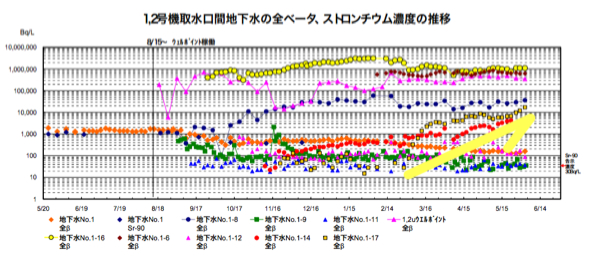
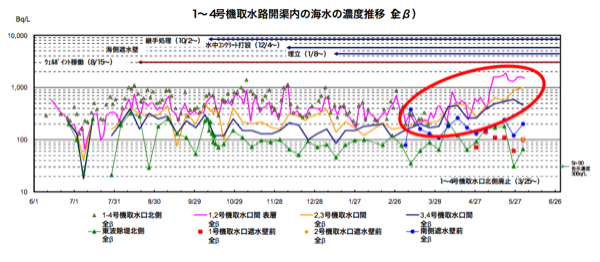
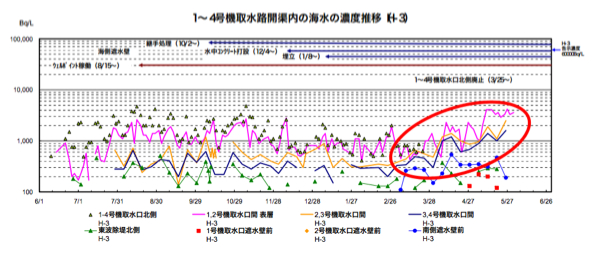

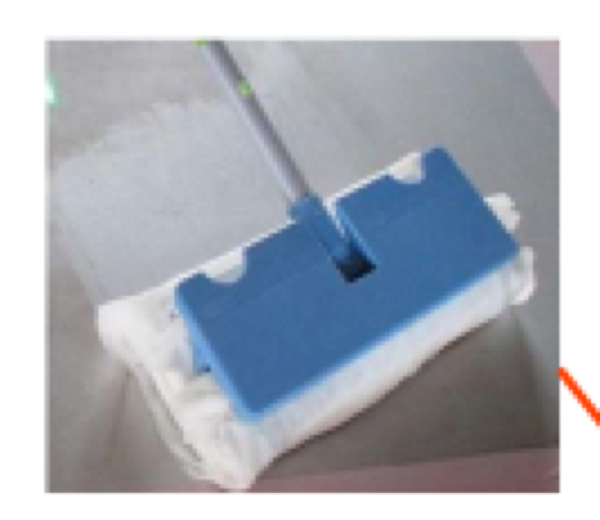

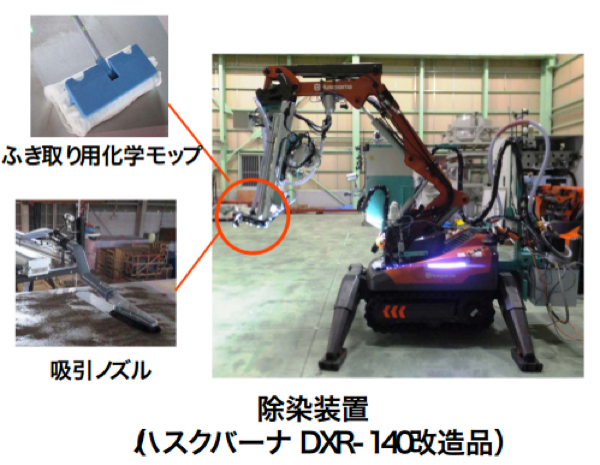

No comments:
Post a Comment